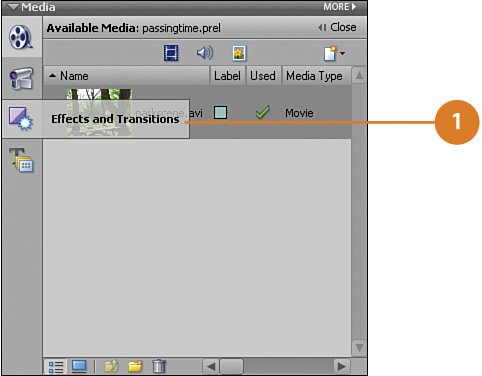Alltransitions have properties that you can adjust in the Transitionscontextual control. Common properties are the location of the centerpoint, the start and end values, the border, and the anti-aliasingquality setting. (For some transitions, you can also change theorientation.) The following list describes the most common controlsand options you can use to adjust transition properties.


Toopen the Transitions contextual control, double-click the a transitionin the Quick view timeline or the Expert view timeline.
.Instant discount applies to the full versions of Adobe Photoshop Elements 2021, Adobe Premiere Elements 2021 and Adobe Photoshop Elements 2021 & Adobe Premiere Elements 2021 software only. Pricing is available only through the online Adobe Store. Zoom Transition. Premiere Pro / project. Inwards zoom transition between clips.
Adobe Premiere Elements Download
Sets the duration of the transition. The default durationis one second.
Controls how the transition is aligned between clips. Bydefault, transitions are centered between clips.
Set the percentage of the transition that is complete atthe start and end of the transition.
Displaysthe starting and ending frames of the clips.
Playsthe transition backward. For example, the Clock Wipe transition playscounterclockwise.
Adjusts the smoothness of the transition’s edges.
Changes settings specific to the transition. Most transitionsdon’t have custom settings.
Adobe Premiere Elements Effects Pack
Youcan change the alignment of a transition placed between two clipsin the Quick view timeline or the Expert view timeline using theTransition contextual control. A transition need not be centeredor strictly aligned with a cut. You can drag the transition to repositionit over a cut as desired. The Transition contextual control alsocontains options to specify alignment.

Whether clips have trimmedframes determines how you can align a transition between them.
- In the Quick view timeline or the Expertview, position the pointer over the cut in a transition and notehow the pointer changes:
If both clips contain trimmed frames at the cut,you can center the transition over the cut or align it on eitherside of the cut so that it either starts or ends at the cut. A clipthat has not been trimmed has a rounded edge in the upper-rightcorner of the clip.
If neither clip contains trimmed frames, the transition automaticallycenters over the cut and repeats the last frame of the first clipand the first frame of the second clip to fill the transition duration.(Diagonal bars appear on transitions that use repeated frames.)
If only the first clip contains trimmed frames, the transitionautomatically snaps to the In point of the next clip. In this scenario,the first clip’s trimmed frames are used for the transition, andframes are not repeated in the second clip.
If only the second clip contains trimmed frames, then thetransition snaps to the Out point of the first clip. In this scenario,the second clip’s trimmed frames are used for the transition, andframes are not repeated in the first clip.
- In the Quick view timeline or the Expertview timeline, select the transition and do any of the following:
Position the current‑time indicator overthe transition, and then zoom in so that you can clearly see thetransition. Drag the transition over the cut to reposition it.
Double-click the transition and reposition it usingthe options in the Transition contextual control.
Youcan edit a transition’s duration by dragging the end of the transitionin either the Quick view timeline or the Expert view timeline. Youcan also use the Transition contextual control to edit the durationof a transition.
- Select the transition in the Quick view timelineor the Expert view timeline and do one of the following:
Position the pointer over the end of thetransition until the Trim‑In icon or the Trim‑Out icon appears.Drag the Trim‑In icon or the Trim‑Out icon to the left or rightto adjust the duration.
Double-click the transition and radjust the durationusing the Transition contextual control.
note: Lengthening atransition’s duration requires that one or both clips have enoughtrimmed frames to accommodate a longer transition.
Thedefault duration for transitions is initially set to 30 frames forvideo and 1 second for audio. You can change the default durationto a value that better suits your movies. Although the new settinghas no effect on transitions already placed in the movie, all transitionsyou subsequently place will default to this value.
- Choose Edit > Preferences >General / Adobe Premiere Elements 11 > Preferences > General.
- Change the value for the Video Transition Default Durationor Audio Transition Default Duration and click OK.
- Double-clickthe transition in the Quick view timeline or the Expert view timeline.
- In the Transitions contextual control, click More.
- In the preview area, drag the small circle to repositionthe transition center. (Not all transitions have an adjustable centerpoint.)Default center (left) and repositioned center (right)
Copy and paste transitions in theExpert view timeline
Adobe Premiere Elements Fade In
To copy and paste transitions, select consecutiveclips that have a transition before selecting the transition youwant to copy.
- Select the consecutive clips that have a transitionapplied to them.
- Select the transition and then select Edit > Copy,or press Ctrl-C.
- Select the consecutive clips for which you want to applythe copied transition.
Note:
Video transitions are pasted to video tracks and audiotransitions are pasted to audio tracks.

